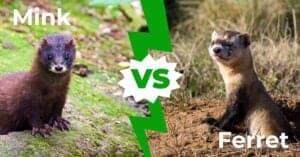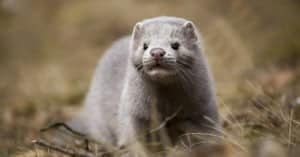Are you ready for your heart to melt? Baby minks are the epitome of adorableness with their itty-bitty paws, silky soft fur, and curious eyes. In this article, we’ve gathered the most precious pictures of baby minks as well as several incredible facts. These bundles of cuteness will steal your heart and give you a newfound appreciation for the world of baby minks!
1. There Are Two Species of Baby Minks
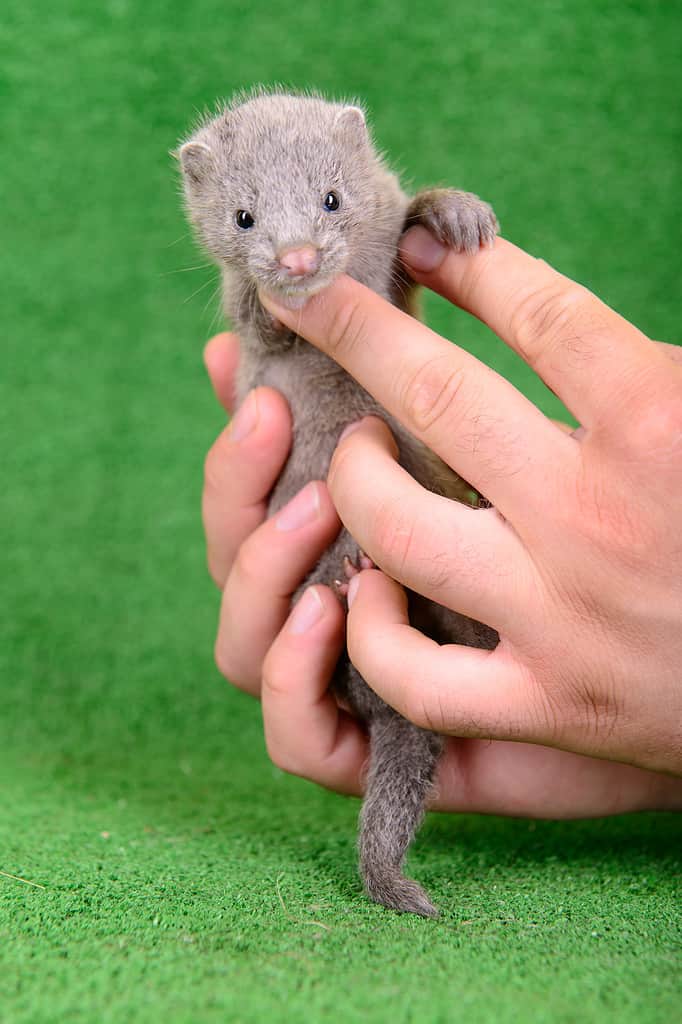
Baby minks often purr when they are content. They also squeak when separated from their mother.
©Astakhova/iStock via Getty Images
Today, there are two species of baby minks: the American mink (Neogale vison) and the European mink (Mustela lutreola). It can be tricky to tell the difference between the two, but there are a few key features to look for. The American mink is bigger than the European mink, with a longer tail that is thick and fluffy. American minks are 12 to 18 inches long and weigh 1 to 3 pounds. In the winter, their fur grows much denser and softer than that of the European mink. In addition, American minks are native to North America, although today they also live in South America, Asia, and Europe.
European minks, on the other hand, are native to Europe and are slightly smaller than the American mink, measuring 12 to 14 inches long and weighing 1.2 to 1.8 pounds. Their fur is shorter and more red than the dark brown fur of the American mink, and their tales are more slender. In addition, European minks have white patches on their upper and lower lips and snouts, while American minks only occasionally have white on their upper lips.
New England was once home to a third mink species, the sea mink (Neogale macrodon). However, the sea mink was declared extinct in the 1890s.
2. Some Baby Minks Are in Danger of Extinction
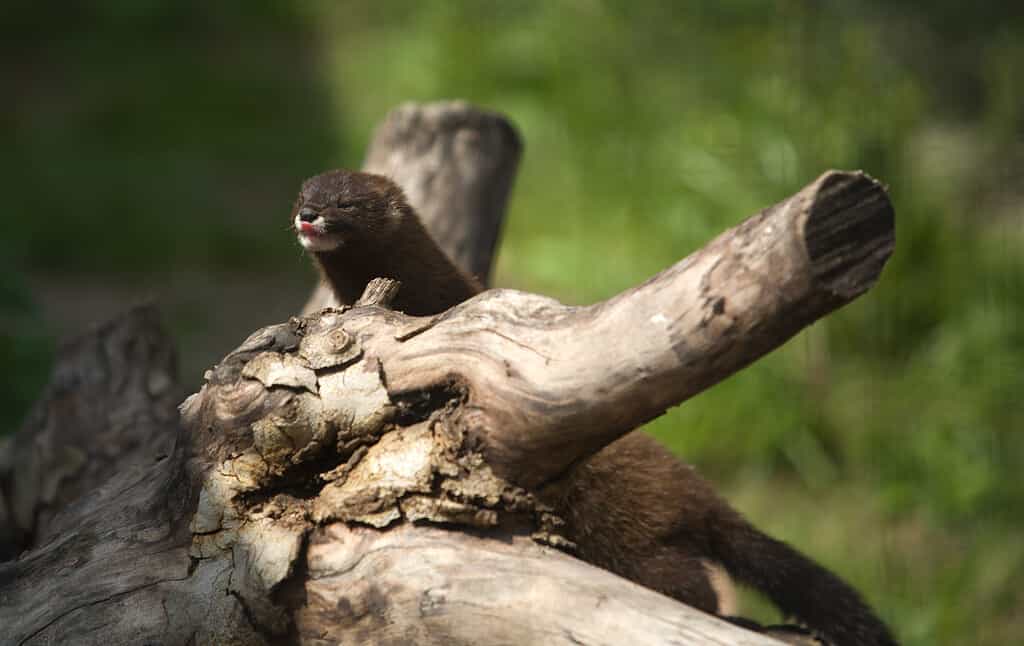
European minks are also called Eurasian minks and Russian minks.
©Juan García Aunión/iStock via Getty Images
According to the International Union for Conservation of Nature (IUCN), the European mink is critically endangered. Their numbers have been declining by more than 50% over the past few generations, and sadly, they are expected to drop by over 80% in the near future. Many regions of Central Europe have already lost all of their European minks. The decline of these animals is caused by many factors, such as habitat destruction, and climate change. In addition, the American mink was introduced in Europe, which has led to competition and new diseases.
3. Baby Minks Are Called “Pups” or “Kits”
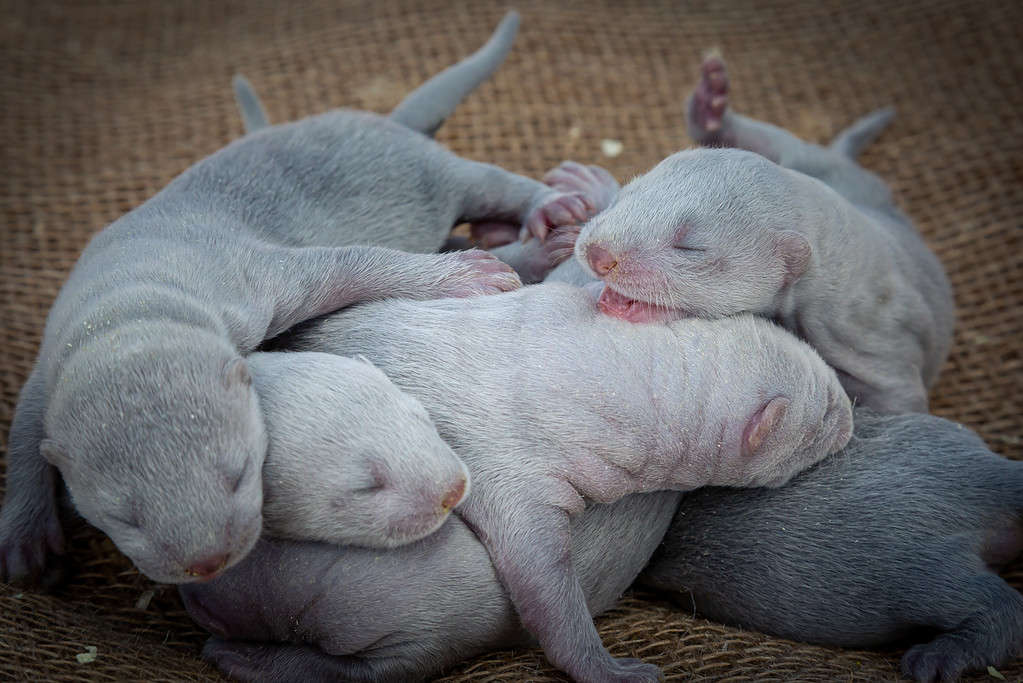
When they are first born, baby American minks have pink bodies and fine silvery hairs.
©Konstantin Sokolov/iStock via Getty Images
After a gestation period of 40 to 75 days, female minks give birth to a litter of one to eight babies sometime between April and June. Mink babies in the same letter might have different fathers, as minks are not monogamous. Baby minks, called pups or kits, are super tiny and weigh just 6 grams when they are born! They are born blind and rely solely on their mother’s milk for the first five weeks of life. However, they grow very quickly, with European minks tripling their birth weight within just the first 10 days. Baby minks open their eyes after about 25 to 31 days, and begin hunting when they are around eight weeks old. However, they still will stick close to their mother for several more months.
4. Baby Minks Are Good Swimmers
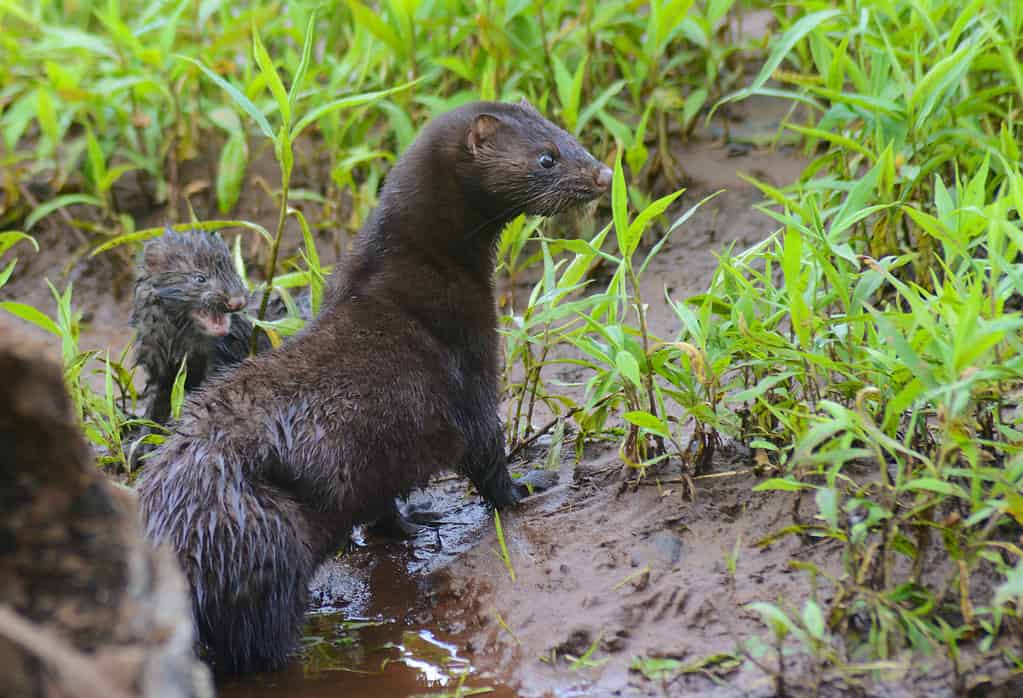
As they get older, baby minks accompany their mothers on treks beyond the nest.
©Betty4240/iStock via Getty Images
As semiaquatic mammals, baby minks take to the water quickly, typically learning to swim when they are around six to eight weeks old. Baby minks have special webbed toes, which help them as they propel their bodies through the water in a wave-like motion. When they are in warm water, typically around 75 degrees Fahrenheit, minks can swim for up to three hours. However, they do not last nearly as long in cold water, and will usually begin to struggle after about 27 minutes.
When minks often dive underwater, they usually only go about 12 inches deep and stay beneath the surface for 10 seconds at a time. However, on occasion, they may go several feet below the surface and stay underwater for one to two minutes. Baby minks also have water-repellent hair coated with special natural oils that create a waterproof barrier. This helps them stay warm and dry.
5. Baby Minks Are Also Good at Climbing
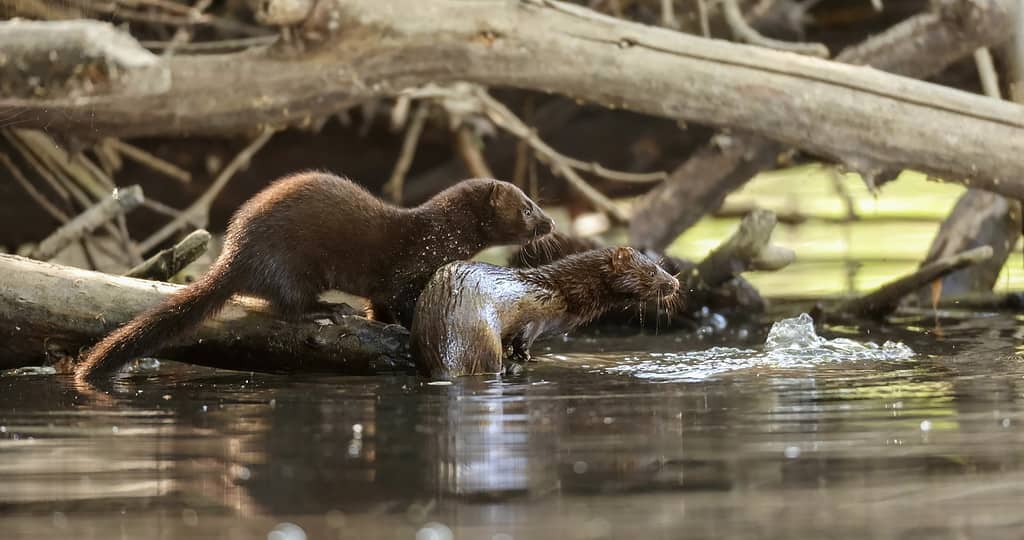
Mother minks teach their babies how to climb, hunt, and swim.
©Banu R/iStock via Getty Images
As baby minks get older and begin to venture outside of the nest, they also learn to climb. These cute little furballs are skilled acrobats and have some pretty impressive moves that help them catch their prey. A mink can scale a tree as well as any expert, snatching eggs from a bird’s nest or grabbing a fledgling for a quick snack. They are opportunistic predators that take advantage of any chance they get to satisfy their hunger, tracking down prey on land, in trees, and in the water.
6. Sometimes Baby Minks Smell Like Skunks
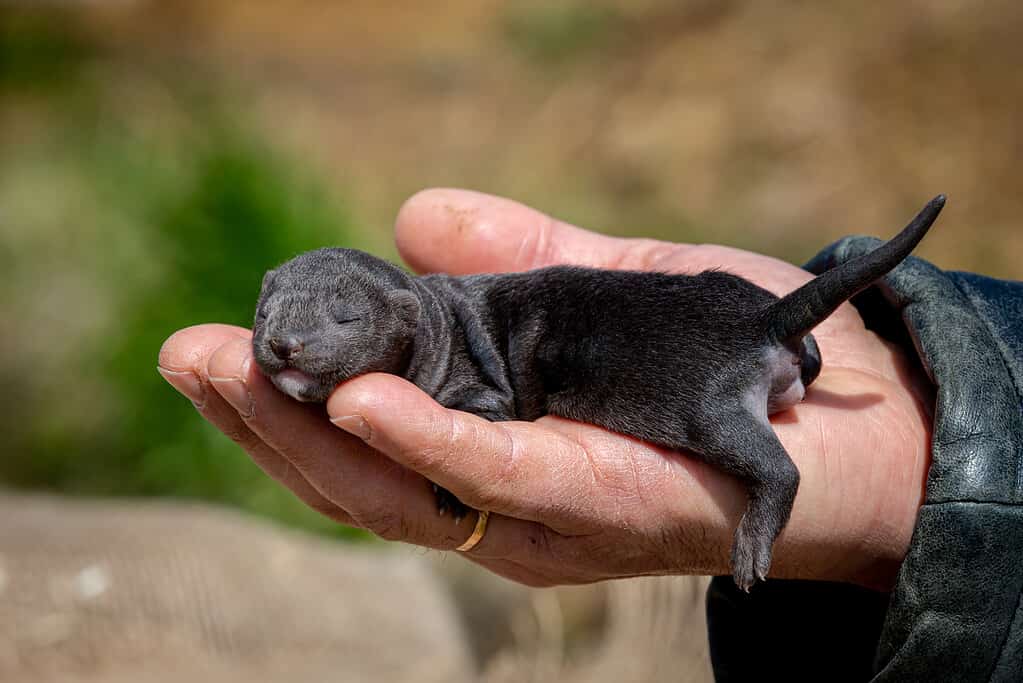
Baby minks open their eyes when they are 25 to 31 days old.
©Konstantin Sokolov/iStock via Getty Images
As members of the Mustelidae family, baby minks are related to badgers, otters, weasels, and wolverines. Minks don’t have the best sense of smell, but much like their other relatives, they do have some pretty smelly defenses.
Baby minks have special anal glands that they use for scent marking. If they feel stressed or threatened, they can also shoot a foul-smelling substance from their anal glands at a distance of about 12 inches! In addition, minks have scent glands on their throats and chests, adding to their smelly arsenal. In fact, one scientist described the smell produced by these glands as even worse than that of skunks!
7. Baby Minks Grow Up to Be Apex Predators
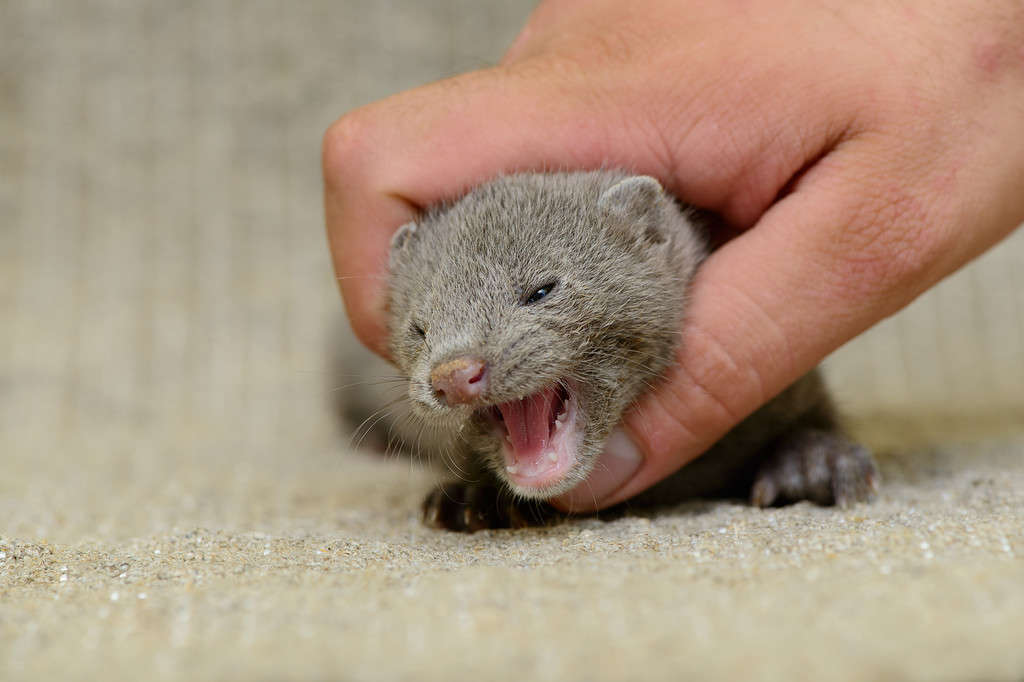
Baby minks have tiny sharp teeth.
©Astakhova/iStock via Getty Images
As babies (and even adults), minks have an adorable and innocent appearance, with small furry bodies and tiny round eyes. They might look like cute and cuddly pets, but they actually have a surprisingly aggressive side. Some people even go as far as calling them vicious, although this is mostly because they are wild animals and carnivorous predators.
In fact, these pint-sized predators have a knack for taking down prey that’s larger than themselves, and they’re often not content with just one meal. Sometimes minks will catch more than they can actually munch on! Baby minks are vulnerable, but once they are adults, they have very few enemies in the wild. In addition, when a mink feels threatened, it is not afraid to let everyone know. Minks will hiss, growl, screech, or release a strong musky scent from their anal glands.
8. Baby Minks Love to Play and Can Purr
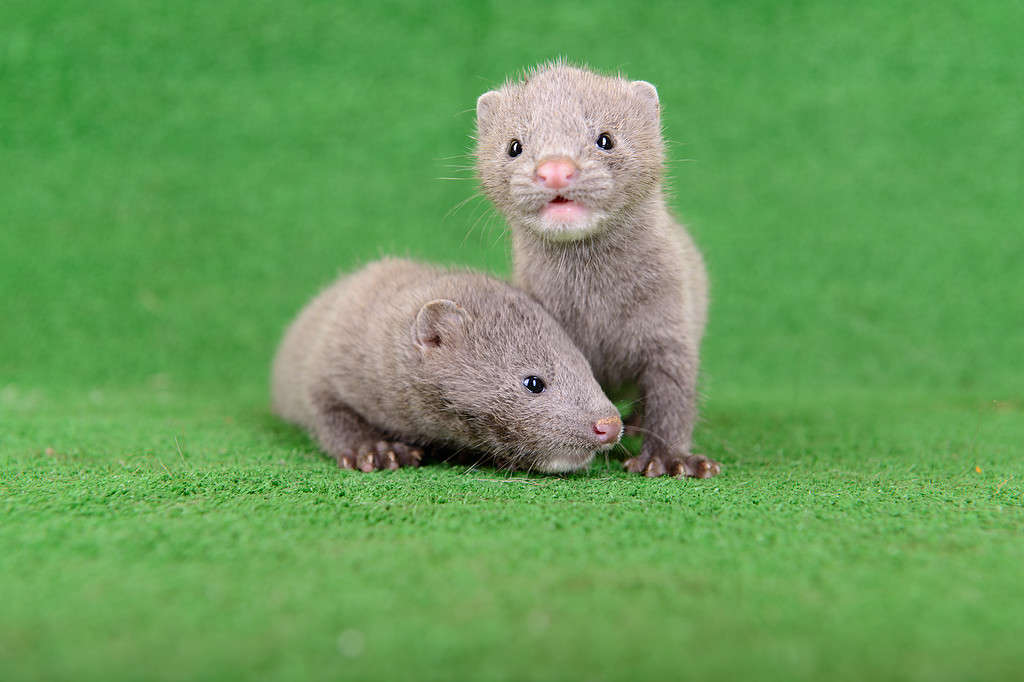
Baby minks love to play together.
©Astakhova/iStock via Getty Images
Minks may have a reputation for being fierce and smelly when they feel threatened, but they also have an adorably sweet side. In fact, baby minks love to play! They often participate in locomotory play, zooming around their space in rapid movements. In addition, minks enjoy playing with their littermates in rough and tumble play, engaging in friendly wrestling matches that look almost like well-choreographed dances. Baby minks even engage in solitary play, doing their own thing and enjoying some cute me-time. Sometimes, this solitary play even looks a bit like social interaction, as if going on their own personal adventure.
And did you know that minks can purr — just like cats do? It’s true! Minks make a soft, rumbling sound when they’re happy and content. Purring is also a sign that they’re feeling safe and secure. A mink’s purr is not quite as loud as a cat, but it’s just as sweet.
9. Some Baby Minks Are Raised on Farms for Their Soft, Waterproof Fur
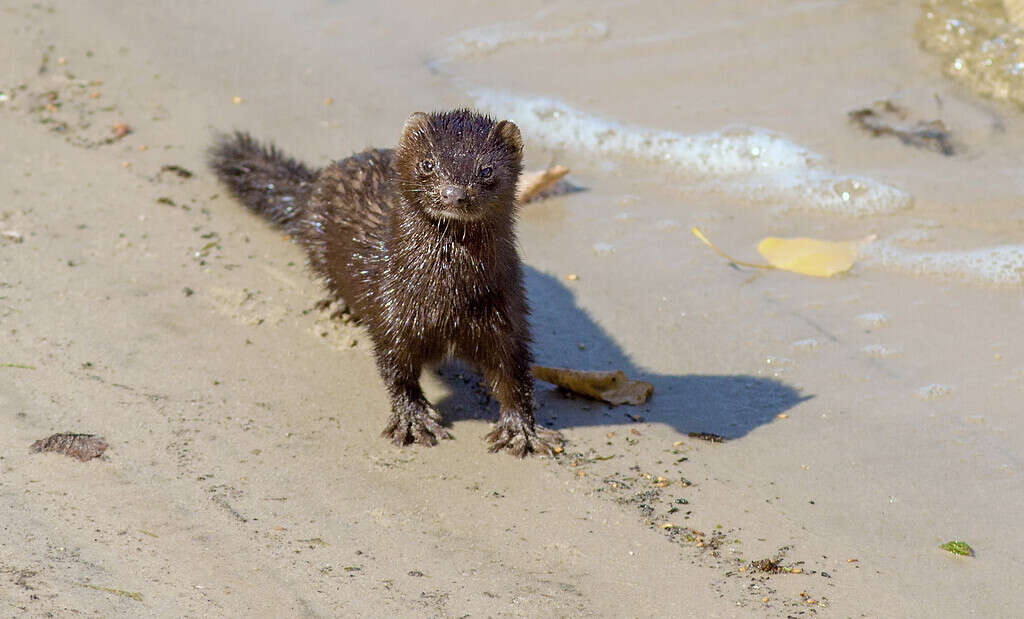
Minks have very soft and durable fur that protects their bodies both on land and in the water.
©Wirestock/iStock via Getty Images
Not too long ago, owning a mink coat was a status symbol and ticket to high society. Wearing mink coats symbolized wealth and luxury, reserved only for those with extra deep pockets. Originally, mink coats were crafted from the pelts of wild-caught minks, making them even more rare and exclusive. However, in the mid-twentieth century, mink farms began springing up all over North America, causing a sudden abundance of mink fur to flood the market. Unfortunately, the demand for mink fur has taken its toll on these adorable creatures, so many people opt for faux fur today instead of real mink fur.
In many areas of the world, mink fur is still highly sought after. However, animal rights groups have raised serious concerns about the welfare of minks on fur farms. These cute critters often live in cramped and unsanitary conditions, which is far from the life they deserve. The methods used to end their lives can also be quite controversial, with some considered cruel. This has sparked a growing movement against fur farming, as people become more aware of the ethical implications. In addition, fur farming contributes significantly to greenhouse gas emissions and water pollution, making it a very unsustainable industry. The popularity of fur, including mink fur, has waned, especially among younger generations who prefer more eco-friendly alternatives.
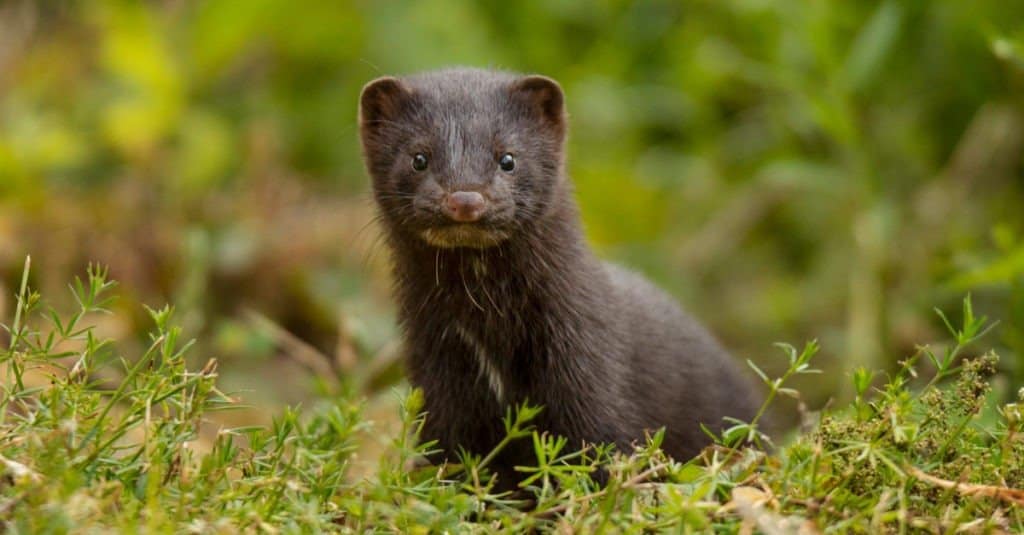
Minks are shy and elusive animals that are rarely seen in the wild.
©An inspiration/Shutterstock.com
The photo featured at the top of this post is © Astakhova/iStock via Getty Images
Thank you for reading! Have some feedback for us? Contact the AZ Animals editorial team.




